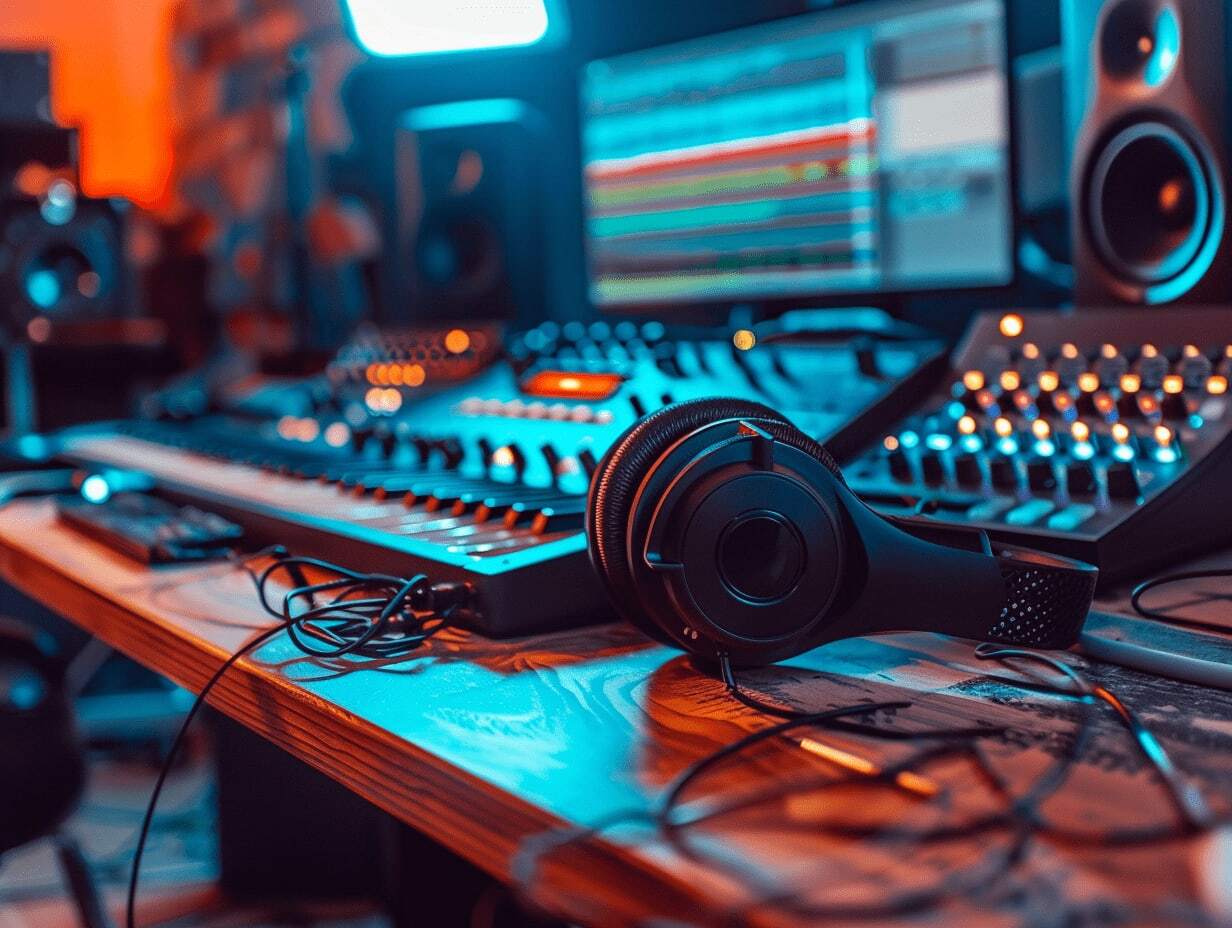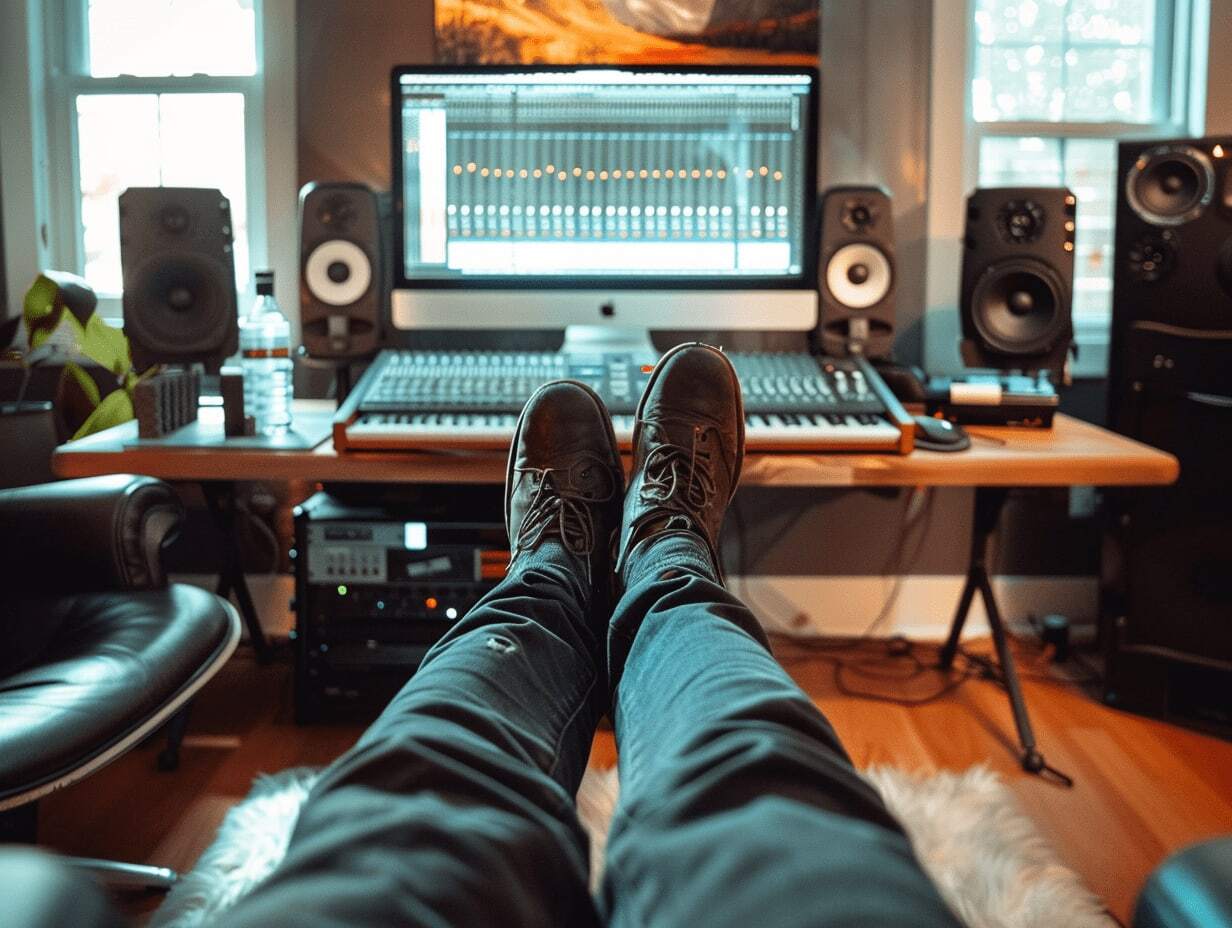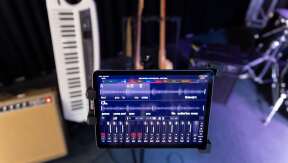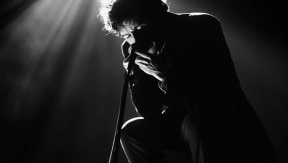In the age of digital music production, having a home studio isn't just a luxury—it's a necessity for musicians and producers who want to create, mix, and master their own tracks. But building a professional home studio can seem daunting, especially if you're working within a budget. Fear not! With careful planning and smart choices, you can create a high-quality home studio without emptying your wallet. Here’s how. (Bonus at the end with tips from legendary producers 😉).
Microphones: Your Voice, Your Instrument
A good microphone is the cornerstone of any recording setup. While top-tier models can cost a small fortune, there are budget-friendly options that deliver excellent quality.
1. Condenser Microphones: For vocals and acoustic instruments, a condenser microphone is ideal. The Audio-Technica AT2020 is a popular choice among budget-conscious producers, offering clear and detailed sound for under $100.
And you can even win a Grammy with it:
2. Dynamic Microphones: If you're recording louder sources like drums or guitar amps, a dynamic microphone like the Shure SM57 is both affordable and versatile. It's a staple in both home and professional studios for a reason.
A mic made for legendary hits like this one:
Studio Essentials

Audio Interfaces: The Heart of Your Studio 🎧
An audio interface is essential for converting analog signals (like your voice) into digital signals that your computer can process. Look for interfaces with good preamps and multiple inputs and outputs.
1. Focusrite Scarlett 2i2: This is a favorite among home studio producers, known for its reliability and quality. With two inputs, it’s perfect for solo artists and small setups.
2. PreSonus AudioBox USB 96: Another excellent choice, this interface is compact, durable, and offers great sound quality for its price range.
3. RME Fireface UC: A bit more expensive, however, if you need an audio interface with multiple inputs to record several instruments, the RME Fireface UC is perfect for that.
Studio Monitors: Hear Every Detail 🔊
Studio monitors are critical for mixing and mastering, as they provide a flat frequency response that reveals the true nature of your recordings.
1. KRK Rokit 5 G4: These monitors are a bit pricier but are highly regarded for their accuracy and clarity. They’re a worthwhile investment if you can stretch your budget a bit.
2. JBL 305P MkII: A more affordable option, these monitors deliver impressive sound quality and are great for smaller spaces.
🚨 Note that if the acoustics of your room are very poor, it is better to use headphones to avoid missing certain frequencies, such as bass or treble, when mixing.
Headphones: Precision Listening 👂
A good pair of studio headphones is crucial for detailed listening and mixing, especially if you're working in a space where loud monitors aren't practical.
1. Audio-Technica ATH-M50x: These headphones are beloved for their comfortable fit and accurate sound reproduction, making them a solid choice for extended mixing sessions.
2. Sony MDR-7506: Another industry standard, these headphones are affordable and provide excellent clarity and isolation.
🚨 Important reminder that protecting your ear is crucial. Listen at a low volume and remember to take breaks.
Software: Your Digital Audio Workstation (DAW) 💻
The software you use for recording, editing, and mixing is just as important as your hardware. Thankfully, there are several budget-friendly DAWs that don’t compromise on features.
1. Ableton Live Lite: Often bundled with various hardware purchases, this version of Ableton Live provides powerful tools for recording and producing music, with an intuitive interface that’s great for beginners.
2. Logic Studio: A comprehensive suite of professional music production software by Apple, designed for creating, editing, and mixing music. It offers a powerful and intuitive interface, advanced audio tools, and a vast library of sounds and loops.
Tips from Legendary Producers

1. Dave Pensado - Grammy-Winning Mix Engineer (Michael Jackson, Beyonce, Katy Perry)
Tip: "It’s not about how much gear you have; it’s about how well you know the gear you do have. Spend time learning every piece of equipment in your studio inside and out."
2. Andrew Scheps - Grammy-Winning Producer and Mixer (Black Sabbath, Red Hot Chili Peppers, Adele, Metallica)
Tip: "Invest in good monitors and treat your room acoustically. Your monitors are your window into your mix. If what you’re hearing isn’t accurate, your mix will suffer."
3. Warren Huart - Producer and Engineer (Aerosmith, Korn, Mötley Crüe, James Blunt)
Tip: "Don’t underestimate the power of good headphones, especially in a home studio setting. Closed-back headphones like the Audio-Technica ATH-M50x can provide detailed monitoring and are great for tracking vocals.”
Jamzone TIPS

Invest in second-hand gear! Check out second-hand gear on websites like eBay, Facebook Marketplace, or Reverb. You can often find high-quality equipment at a fraction of the price. It’s a great way to try new instruments too. Buy, sell, exchange: the possibilities are limitless.
Building a professional home studio on a budget is entirely possible with the right approach. By investing in essential gear like microphones, audio interfaces, monitors, and software, and utilizing tips from seasoned producers, you can create a setup that rivals those of high-end studios.
Remember, it’s not just about the gear—it’s about how you use it.



